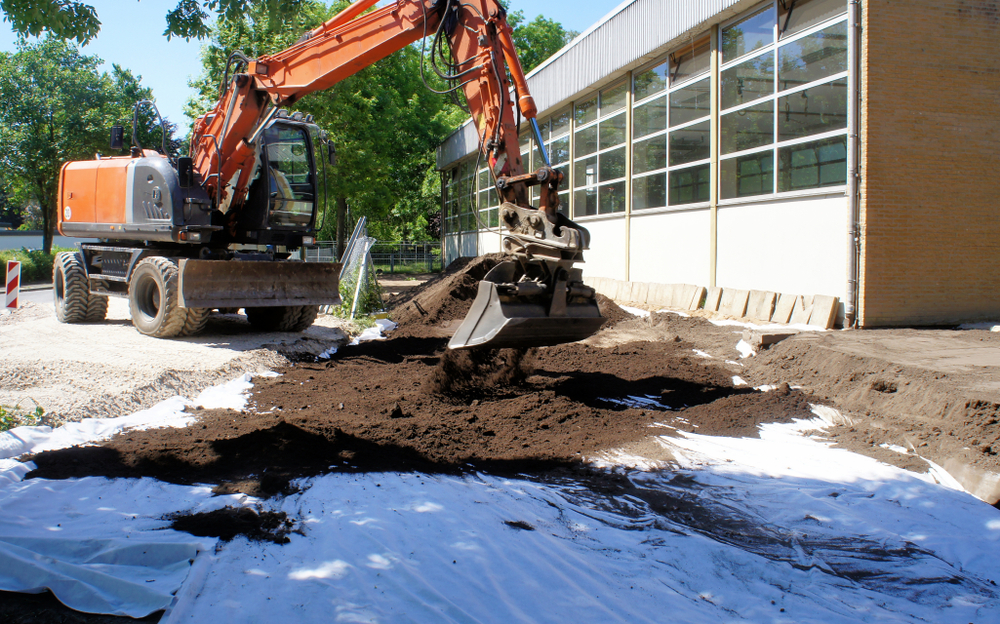A remediation options assessment is a vital phase in the orchestration of contaminated site clean-up. Once a site has been characterised and a conceptual site model developed, the remediation options assessment is used to decide the best approach before a plan is put into place.
Remediation can’t be successfully carried out without this step, and without a comprehensive assessment of all remediation options. Assessment processes are built to ensure the best approach to this phase and to ensure the best remediation outcomes.
However, many assessment processes are built around guidelines that erroneously exclude some options too early in the process – predominantly, bioremediation. This can lead to missed opportunities, sub-optimal or even inappropriate remediation being carried out.
It is not those carrying out the assessment but more the processes themselves that are missing the mark when it comes to bioremediation. Understanding when and why a remediation option should be excluded and ensuring the options assessment is being carried out appropriately can make a big difference to final outcomes and ensuring the right remediation option is deployed.
The problem with focusing on guaranteed compatibility
Bioremediation is still a relatively new remediation option in Australia but is one that has been used extensively and confidentially for some time in other countries. While not suitable for 100% of sites or necessarily the complete solution, it is a compatible and highly effective option in many situations and treatment trains.
So, why is bioremediation still not being widely used or prioritised as a valid remediation option? Predominantly, it comes down to premature exclusion during remediation options assessments.
While there is not a set process for carrying out a remediation options assessment, most individual processes are built on or guided by national/international guidelines – specifically, FRTR or CRC CARE guidelines. While it can seem like a sensible place to start, these guidelines don’t necessarily give the most comprehensive information about remediation options. For example, the CRC CARE guideline for Remediation Options Assessment does not include bioremediation as an option for groundwater remediation. Period.
In the FRTR technology screening process, bioremediation is included as an option for groundwater, but the matrix states that feasibility is site and contaminant specific, and that further analysis is needed to determine compatibility. Therefore, it will often receive a low ranking and be disregarded in favour of those options that are guaranteed to suit despite inferior performance in subsequent cost/benefit and sustainability analyses.
Going for an option guaranteed to work may sound like a legitimate way to shortlist remediation options. However, while these options might be guaranteed to remove contamination, they’re not guaranteed to meet client needs or parameters when it comes to other factors – like cost or environmental impact.
Guidelines are guides, not gospel
While bioremediation might not be the most appropriate option every single time, excluding it too early should be avoided for a couple of reasons:
Firstly, it is only looking at limited elements such as compatibility with site and contaminant.
Secondly, after shortlisting, all options are looked at more in-depth with a multi-criteria analysis or cost-benefit analysis – comparing remediation options requires comparison across a range of different parameters. So, while bioremediation requires further analysis to determine compatibility, this step will be carried out with all shortlisted options anyway – adding little extra work or effort.
But it is after compatibility testing that is becomes really clear why you need to strongly consider bioremediation as a contender and shortlist option.
When compared across a range of different parameters, bioremediation stacks up incredibly favourably, rating high on areas including:
- Community and regulator approval
- Cost-effectiveness
- Social acceptance
- Environmentally friendly and sustainable
It’s also important to remember bioremediation has a high compatibility with most site conditions and any pollutant known to be biodegradable – it is viable in 80-90% of such sites.
Simplify the shortlist & analysis process with expert help
The purpose of a remediation assessment is to determine the right remediation solution for any given site. This goes beyond what will remove the contamination – it includes factors like cost, relevant approvals, local impact and environmental sustainability. Disregarding bioremediation upfront can result in missed opportunities to meet many other factors and to achieve a more efficient, cost-effective and sustainable remediation solution.
Beyond early exclusion during an assessment, there is one other perceived hurdle to bioremediation – and that’s knowledge. Luckily, thanks to growing local expertise, bioremediation is no longer a “rabbit hole” of unknowns.
Bioremediation is widely practised on a global scale – and intensively so in certain parts of the world. More recently, local Australian expertise and support are available to assist with everything from assistance with options assessment to site analysis to deployment.
If or when you’re deciding whether there’s too much uncertainty for bioremediation to be an option for more detailed analysis, local experts can carry out quick tests and find out whether it should be retained as a shortlist option or not.
This is one of the expert services we offer at Novorem. Novorem are locally based leading experts in bioremediation, with wide experience undertaking site testing, analysis and implementation in the Australian market.
If you would like to improve your assessment option process or include bioremediation more regularly in your assessments but don’t have the expertise to make the judgement on-site applicability, we can help. If you are interested in exploring bioremediation and determining the benefits for your site, get in touch with here or call me on +61 2 4869 3261.


